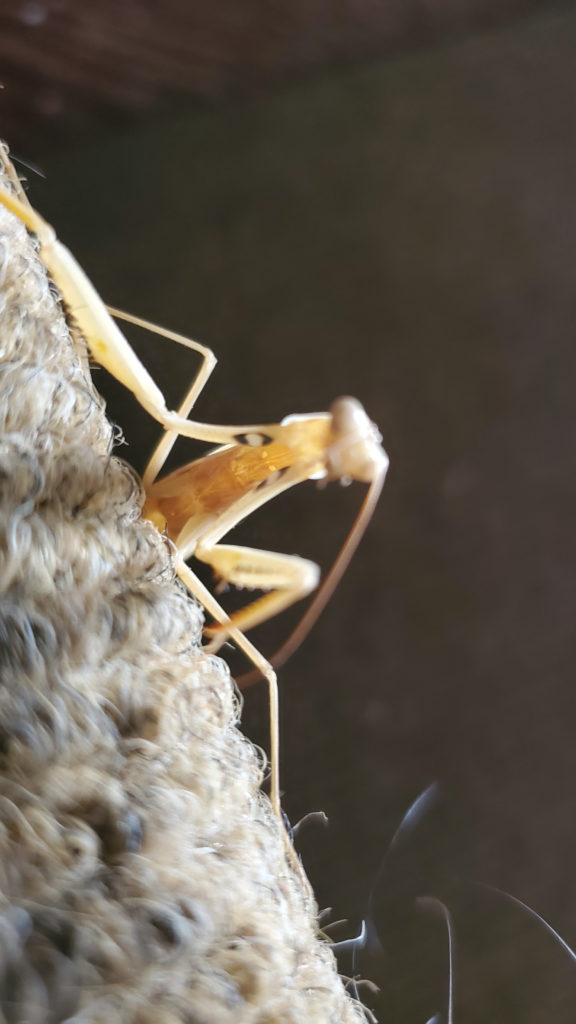Mantis sightings are starting to trickle in, unlike last year, which was more of a flood. European Mantises, as their name suggests, are not native. Each year gardeners purchase their egg cases (called oothecae) with the idea that the emerging mantis nymphs will eat other insects that are bad for their flowers or vegetables. It’s debatable whether they have a beneficial impact since the growing mantises inevitably eat insects that pollinate our plants too. In addition to the annual introduction by some gardeners, in late summer / early fall the females will lay two to three oothecae …and if we have a mild winter, we may be getting mantises through natural reproduction. European Praying Mantises have a tan to green body and a black spot in each “armpit” that may, or may not, have a white center or “bullseye.”
We have two native species of mantid in Montana. Get to know them in a past issue of Notes from the Lab.
Size: 50 – 75 mm (including wings), which extend beyond abdominal tip
Photos by: Valerie Kamps on 8/17/22 in Great Falls, MT
